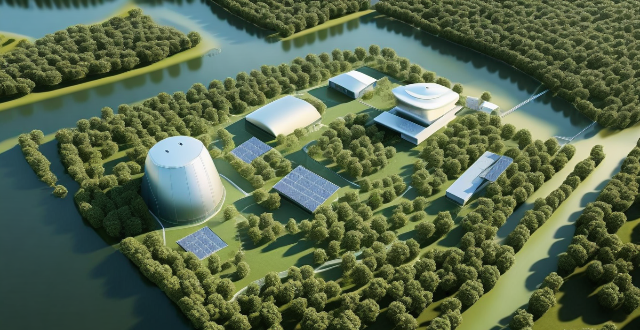Technological advancements discussed at climate summits include renewable energy technologies (solar, wind, hydroelectric power), energy efficiency and conservation measures (building design, transportation, industry), carbon capture and storage (CCS), nuclear power, agroecology and sustainable land use practices (regenerative agriculture, forest management, sustainable fisheries), and green finance and investment (green bonds, green banks, climate risk assessment). These strategies aim to mitigate the effects of climate change by reducing greenhouse gas emissions and promoting sustainable development.

Technological Advancements Discussed at Climate Summits
Climate summits are crucial platforms where global leaders, policymakers, scientists, and activists come together to discuss and find solutions to the pressing issue of climate change. These summits often focus on various strategies to mitigate the effects of climate change, including technological advancements that can help reduce greenhouse gas emissions and promote sustainable development.
Renewable Energy Technologies
One of the most discussed technological advancements at climate summits is the development and deployment of renewable energy technologies. These include:
- Solar Power: The use of solar panels to harness the energy from the sun has been a significant topic of discussion. Advancements in solar technology have made it more efficient and cost-effective, promoting its widespread adoption.
- Wind Energy: Wind turbines have also been highlighted as a viable source of clean energy. Innovations in wind turbine design and placement have increased their efficiency and reduced costs.
- Hydroelectric Power: Hydroelectric power generation, especially through small-scale and run-of-river systems, has been promoted as a sustainable alternative to fossil fuels.
Energy Efficiency and Conservation
Improving energy efficiency and conserving energy resources is another key area of focus at climate summits. This includes:
- Building Design: Innovative building designs that incorporate energy-efficient materials and systems, such as insulation, double-glazed windows, and smart HVAC systems, have been discussed.
- Transportation: Electric vehicles (EVs) and public transportation systems powered by renewable energy sources have been promoted as ways to reduce carbon emissions from the transportation sector.
- Industry: Energy-efficient industrial processes and equipment, as well as waste heat recovery systems, have been highlighted as potential solutions for reducing industrial emissions.
Carbon Capture and Storage (CCS)
Carbon capture and storage (CCS) technologies aim to capture carbon dioxide emissions from power plants and industrial processes before they are released into the atmosphere. These technologies have been discussed at climate summits as a potential solution for reducing greenhouse gas emissions.
Nuclear Power
While controversial, nuclear power has been discussed at climate summits as a low-carbon alternative to fossil fuels. Advancements in nuclear technology, such as small modular reactors (SMRs) and advanced safety features, have been explored as potential solutions for meeting global energy demands while reducing carbon emissions.
Agroecology and Sustainable Land Use Practices
Agroecology and sustainable land use practices have been discussed at climate summits as essential components of climate action plans. These include:
- Regenerative Agriculture: Practices that improve soil health, increase biodiversity, and sequester carbon in the soil.
- Forest Management: Strategies for managing forests sustainably, including afforestation and reforestation efforts, which can help absorb carbon dioxide from the atmosphere.
- Sustainable Fisheries: Practices that ensure the long-term health of fish populations and marine ecosystems, reducing the environmental impact of fishing activities.
Green Finance and Investment
Finally, green finance and investment have been discussed at climate summits as critical tools for driving the transition to a low-carbon economy. This includes:
- Green Bonds: Financial instruments specifically designed to fund climate and environmental projects.
- Green Banks: Financial institutions committed to investing in sustainable projects and promoting green technologies.
- Climate Risk Assessment: Integrating climate risk assessments into financial decision-making processes to encourage investments in sustainable projects and technologies.